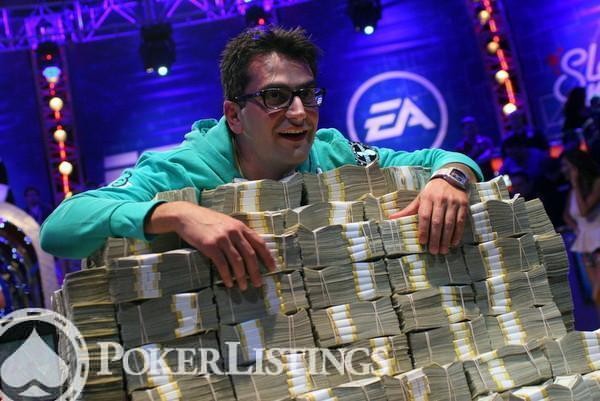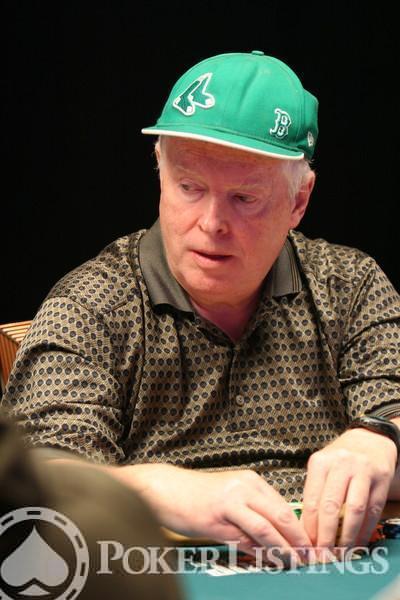Harrington On Holdem
Authors Dan Harrington and Bill Robertie
- Harrington On Hold'em Vol 2 Pdf
- Harrington On Hold'em Volume 3
- Harrington On Hold'em Page
- Harrington On Hold'em Amazon
Harrington on Holdem Expert Strategy for No-Limit Tournaments (Volume 1: Strategic Play) Dan Harrington and Bill Robertie Reviewed by TwoGun and Ozone on May. Overview This is the first volume in a two-volume No-Limit Tournament strategy guide. Harrington on Hold 'em is a series of poker books about poker strategy, particularly for Texas hold 'em poker tournaments. They were all written by Dan Harrington and Bill Robertie and published by Two Plus Two Publishing. Harrington on Hold 'em: Expert Strategies for No Limit Tournaments, Vol. III-The Workbook Paperback – Illustrated, May 30, 2006 by Dan Harrington (Author). Harrington on Hold Em takes you to the part of the game the cameras ignore the tactics required to get through the hundreds and sometimes thousands of hands you must win to make it to the final table. Harrington s sophisticated and time-tested winning strategies, focusing on what it takes to survive the early and middle stages of a No-Limit Hold Em tournament, are appearing here for the first time in print. All games are lottery games controlled by the Delaware Lottery. You must be 21 or older to play. Play responsibly. If you or someone you know has a gambling problem, call the Delaware Council on.
Find out how to qualify for this book in the Two Plus Two poker bonus program
Synopsis of Harrington on Hold'em, Expert Strategy for No Limit Tournaments; Volume I : Strategic Play
Poker has taken America by storm. But it's not just any form of poker that has people across the country so excited, it's No-Limit Hold'em, the main event game. And now, thanks to televised tournaments, tens of thousands of new players are eager to claim their share of poker glory. Harrington on Hold'em takes you to the part of the game the cameras ignore, the tactics required to get through the hundreds and sometimes thousands of hands you must win to make it to the final table. Harrington's sophisticated and time-tested winning strategies, focusing on what it takes to survive the early and middle stages of a No-Limit Hold'em tournament, are appearing here for the first time in print. These are techniques that top players use again and again to get to make it to final tables around the globe. Now, learn from one of the world's most successful No-Limit Hold'em players how to vary your style, optimize your betting patterns, analyze hands, respond to a re-raise, play to win the most money possible, react when a bad card hits and much, much more.

Dan Harrington won the gold bracelet and the World Champion title at the $10,000 buy-in No-Limit Hold'em Championship at the 1995 World Series of Poker. And he was the only player to make it to the final table in 2003 (field of 839) and 2004 (field of 2576) considered by cognoscenti to be the greatest accomplishment in WSOP history. In Harrington on Hold 'Em, Harrington and 2-time World Backgammon Champion Bill Robertie have written the definitive book on No-Limit Hold'em for players who want to win, and win big.
Excerpt from the Book Expert Strategy for No Limit Tournaments: Responding to a Raise Behind You

What happens when you enter the pot with a nice call or raise, and a player sitting behind you reraises? There is no easy answer to this question, but there are a number of issues you have to weigh in deciding on your next move. In some cases, all (or most) of the issues will point in the same direction, and your decision gets pretty easy. In other cases, the issues will point in different directions, and you’ll have a tough decision.
Let’s look at the issues first. What should you take into consideration when you’re reraised?
- Your hand. Did you come into the pot with solid values, or were you making a call or raise with a marginal hand for your position?
- How many players were in the pot? A raise from a player facing only one opponent in the pot is usually less significant than one from a player who has already seen two or more players enter the pot. There are at least four different situations, which must be judged differently. (1) You call the blind. A raise behind you indicates some strength. (2) You raise. A reraise behind you indicates more strength. (3) There is a call in front of you, and then you raise. A reraise behind you indicates even more strength. (4) There is a raise in front of you, and you reraise. Now a reraise behind you represents a real powerhouse.
- How many players are yet to act? A reraise from the button or one of the blinds may just be an attempt to defend the blind or foil a steal. A reraise from a player in early or middle position, who faces the possibility of several players yet to act behind him, indicates more strength.
- Will you have position on the reraiser after the flop? If the reraiser is one of the blinds, you will act behind him after the flop. You can call with weaker hands than if the reraiser will act after you.
- What are the pot odds? Be sure to calculate the pot odds before making your move. You should be much more willing to enter a pot with good odds rather than bad odds.
- How aggressive is the reraiser? A reraise from a conservative player has to be given somewhat more respect than a reraise from a player who plays many pots. But don’t press this analysis too far. Many aggressive and super-aggressive players like to steal unopened pots, but their reraises may be quite sound and normal. Until you have evidence that a player will try to reraise with minimal or weak hands, don’t be quick to assume that’s the case.
- What’s the situation in the tournament? If it’s early in the tournament, and both you and the reraiser have plenty of chips in relation to the blinds and antes, you want to play more conservatively. You should be much less inclined to get involved in a situation that could knock you out of the tournament quickly. As your stack shrinks and the blinds pressure you more, your willingness to make a big move increases.
Those are a lot of issues to weigh. Let’s look at a few examples and see how these decisions work out in practice.
Example No. 1. It’s a nine-handed table, with blinds of $100/$200 and antes of $25. The pot is $525 to start. You’re in fifth position with $14,000. The stacks range between $6,000 and $17,000. The first four players fold to you. You have held good cards and have played several recent pots. You hold
Th Td
and raise to $600, making the pot $1,125. The rest of the players fold to the big blind, who has $12,000 and who has played somewhat aggressively. He puts in $1,000, making it $600 to you. The pot is now $2,125. Should you fold, call, or raise?
Answer: Let’s walk through our criteria and see where we stand with this hand.
- Your holding itself is very good. A pair of tens is an underdog only to the top four pairs. Favorable.
- The reraise came from the last player to act, and there were no other players in the pot. Favorable.
- You will have position on the reraiser after the flop. Favorable.
- It costs you $600 to call, and there is $2,125 in the pot. You’re being offered almost 3.5-to-1 odds to call. Very favorable.
- The reraiser is known to be aggressive, and your recent activity creates the appearance that you may be on a steal. Favorable.
- Both you and the reraiser have plenty of chips in relation to the hand. Neutral to favorable.
Your first decision here is pretty easy; nearly all factors are favorable, and you’re going to play the hand. Your real decision is a tougher one. Are you going to just call, or are you going to reraise?
You might think at first that with nearly all factors favorable, this must be an easy reraise. But that’s not the case. A pair of tens is not really a great hand for putting in a third raise, and how you want to handle the hand depends a lot on the flop. If a couple of overcards appear on the flop, you’re in bad shape. If low cards appear, you’re in great shape. I like to base my decision on my position and my chip strength. If I’m out of position, I like to wrap the hand up quickly. If I have position, I like to let the hand play out more slowly, so that my positional advantage has time to operate.
Harrington On Hold'em Vol 2 Pdf
My chip strength also affects my decision. It’s early in the tournament, and I have plenty of time. The value of hands like jacks and tens drops in this situation, since those hands often end in coin-flip situations against hands with two higher cards. That also argues for playing the hand more slowly. Considering both position and chip strength, I’d recommend a call.
Harrington On Hold'em Volume 3
Example No.2. Same table as before, with the same structure of blinds and antes. Once again, you have $14,000. A couple of players have a little more; most have less. The pot is again $525 to start. You’re in third position with
Ac Tc
The first and second players fold. You elect to call. The fourth player folds, but the player in fifth position, with $10,000, raises $1,000. Since he is a new player who just joined the table, you know nothing about him. You have been playing aggressively and have won several recent small pots. The players behind him and the blinds all fold. The action is to you. The pot is now $1,725, and it costs you $800 to call. What should you do?
Answer: Let’s walk through our criteria once more and see where we stand.
Harrington On Hold'em Page
- Your hand, Ac Tc, is a relatively weak holding for third position. Your call here was a little frisky. Unfavorable.
- When your opponent raised, there were still four active players behind him. That indicates some strength. Unfavorable.
- You will be out of position after the flop. Unfavorable.
- It costs you $800 to call, and there is $1,725 in the pot, slightly better than 2-to-1 odds. Not as good as last time, but not bad either. Slightly favorable.
- You know nothing about the raiser. Therefore he knows nothing about you. The fact that you have been aggressive lately is irrelevant, because he can’t know that, having just arrived at the table. (Did you notice this?) He’s probably giving you credit for being conservative, since that’s what most players do by default. Therefore he’ll imagine that your hand is better than it actually is. Unfavorable.
Not much doubt here. All factors except for the pot odds are unfavorable. Fold.
